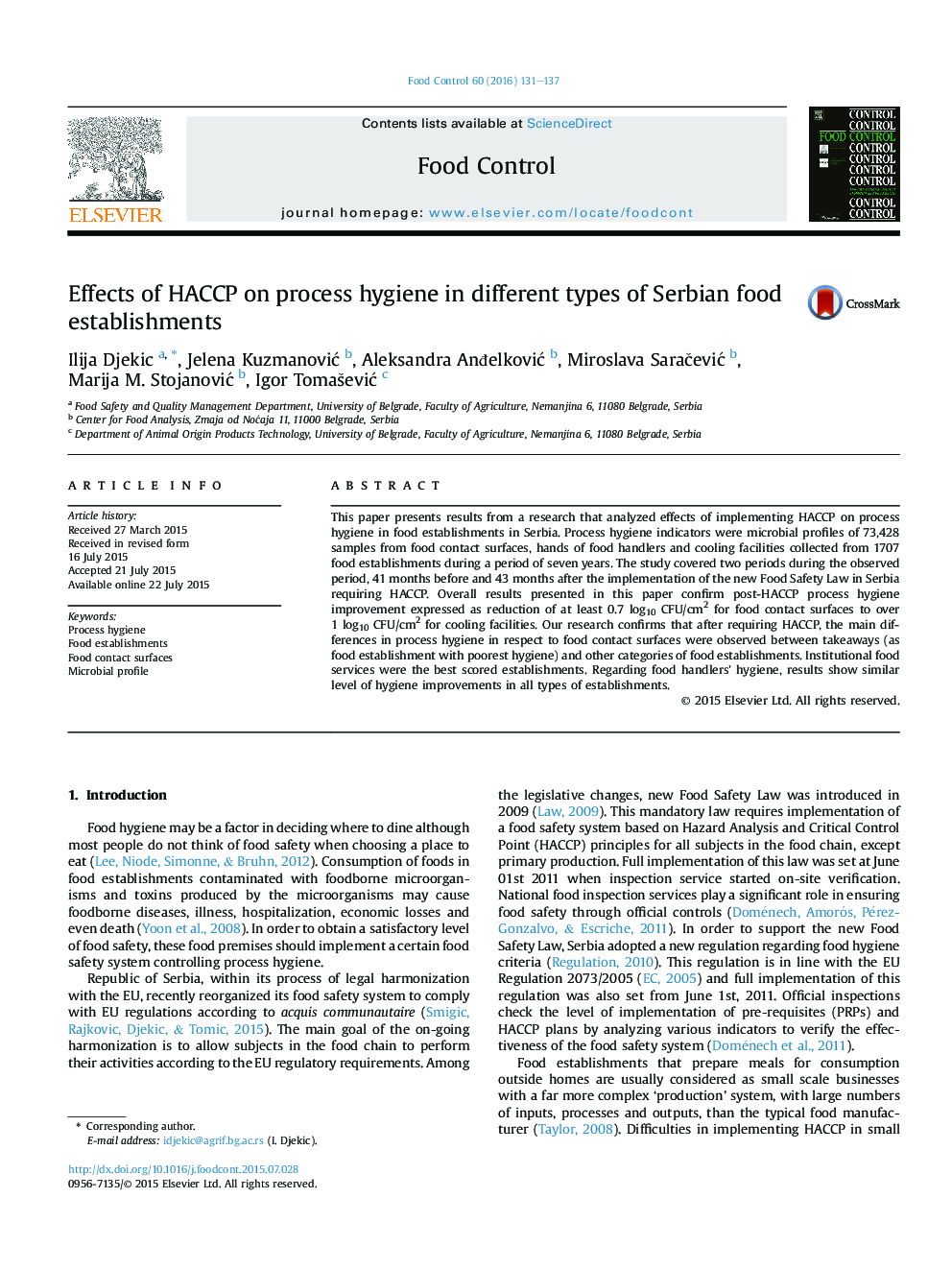| Article ID | Journal | Published Year | Pages | File Type |
|---|---|---|---|---|
| 6390231 | Food Control | 2016 | 7 Pages |
â¢73,428 samples from 1707 food establishments were analyzed during seven years.â¢Microbial profile of three types of food contact surfaces was observed.â¢HACCP improves process hygiene in all types of food establishments.â¢HACCP achieved reduction of at least 0.7 log10 CFU/cm2 for food contact surfaces.â¢HACCP achieved reduction of over 1 log10 CFU/cm2 for cooling facilities.
This paper presents results from a research that analyzed effects of implementing HACCP on process hygiene in food establishments in Serbia. Process hygiene indicators were microbial profiles of 73,428 samples from food contact surfaces, hands of food handlers and cooling facilities collected from 1707 food establishments during a period of seven years. The study covered two periods during the observed period, 41 months before and 43 months after the implementation of the new Food Safety Law in Serbia requiring HACCP. Overall results presented in this paper confirm post-HACCP process hygiene improvement expressed as reduction of at least 0.7Â log10Â CFU/cm2 for food contact surfaces to over 1Â log10Â CFU/cm2 for cooling facilities. Our research confirms that after requiring HACCP, the main differences in process hygiene in respect to food contact surfaces were observed between takeaways (as food establishment with poorest hygiene) and other categories of food establishments. Institutional food services were the best scored establishments. Regarding food handlers' hygiene, results show similar level of hygiene improvements in all types of establishments.
